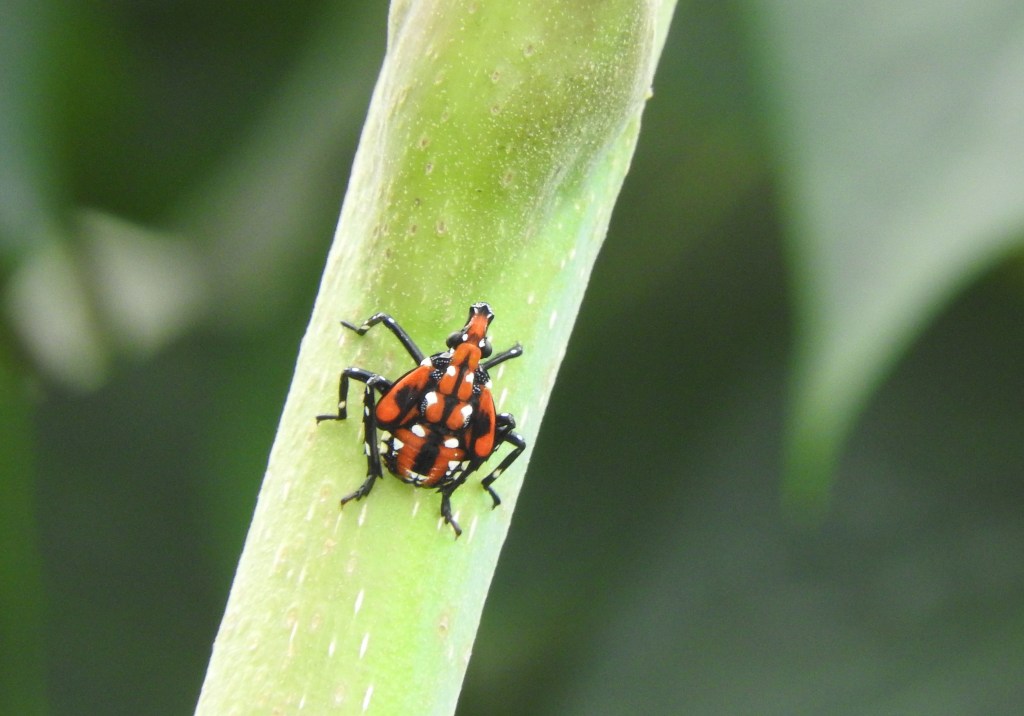Most likely, cicadas — noisy but harmless — are the only bugs you’ve been thinking about this spring.
Meanwhile, another insect that is more threatening to trees and plants may have been sneaking into your neighborhood unheeded.
“Be on the alert for spotted lanternfly nymphs,” said Sharon Yiesla, plant knowledge specialist in the Plant Clinic at The Morton Arboretum in Lisle. “Researchers are depending on members of the public to report sightings so they can figure out how far this new bug has spread.”
Spotted lanternfly, a sap-sucking leafhopper from Asia, has spread through Pennsylvania and the East Coast and was first spotted in Cook County in 2023. The insect feeds on more than 70 species of trees and other plants and could become a big problem for fruit growers. In the East, swarms of the flying insects have proven to be a major nuisance to people trying to enjoy the outdoors in summer.
At this time of year, the insects have hatched from eggs into the nymph stage of their life cycle. The nymphs look something like a broad, long-legged beetle. At first they are black with white spots and long antennae. In the last nymph stage, they are red and black with white spots, about ¼ inch long. “The nymphs don’t fly, they hop,” Yiesla said.
Their final metamorphosis, about the first of July, will turn them into a 1-inch-long adult flying insect that has two pairs of wings, one gray with black spots and one red and black.
Spotted lanternfly nymphs love to feed on the sap of the tree commonly called tree of heaven (Ailanthus altissima). They may be seen in vacant lots, alleys and other places where these weedy trees self-seed and proliferate. They also feed on grapes, apples, and many other fruit trees, as well as hops, the vines used to flavor beer.
The insect also is known to feed on tree species including oak, walnut, sycamore, pine, willow, and maple, especially silver maple. Its feeding may weaken young trees, though sap-feeding has not been found to cause major damage to mature trees.
“If you see what you think is a spotted lanternfly nymph, don’t squash it before you take a picture of it with your phone,” Yiesla said. Email it to [email protected], so scientists can evaluate it and add sightings to a central database. To report a sighting outside Illinois, contact your state department of agriculture.
Don’t rush to spray insecticides if you see spotted lanternfly nymphs or any other problematic insects. Instead, contact the Plant Clinic for guidance if you are considering insecticides. Certain insecticides may be effective, but only if applied at the right time in the insect’s life cycle. Used improperly, insecticides will be ineffective and are likely to also kill important beneficial insects.
The periodical cicadas that have been in the news this spring are native insects that have co-existed peacefully with American trees for millions of years. “We should worry much more about invasive insect pests such as spotted lanternfly that are really a threat,” Yiesla said.
Spotted lanternfly is one bug on a long list of destructive invasive insects and insect-borne diseases that in some cases have drastically changed the canopy of trees in our cities and suburbs. They include Dutch elm disease, which swept away the stately elms that once lined Chicago streets; emerald ash borer, which has killed tens of millions of ash trees; Asian longhorned beetle, which threatens maples and other trees; and spongy moth, which can strip all the leaves from mature trees.
“May is Invasive Species Month,” Yiesla said. “That’s a good reminder to pay attention for signs of
insects that can actually do our trees harm.”
For tree and plant advice, contact the Plant Clinic at The Morton Arboretum (630-719-2424, mortonarb.org/plant-clinic, or [email protected]). Beth Botts is a staff writer at the Arboretum.


